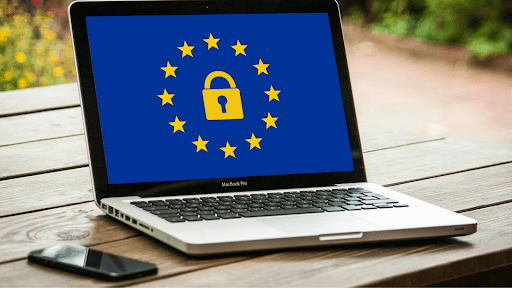
>Share this post<
by kooomo
January 05, 2023
In today's article, we will speak in detail about the eCommerce trends for 2023, which will shape the industry for the future, by providing retailers with important advice.. Let's have a look at the most important trends:
1.Personalisation will continue to be essential
Whether you are part of the business-to-business or business-to-consumer industry, you will need to personalise the communication to your customers. Nevertheless, it can help you to generate more sales, whether you use it in your marketing or include it in your eCommerce website too. It is foreseen that eCommerce brands will be using data for more than just insights, in the next following years. Online stores will use customer data to expand their product range and also to see where and how they can improve the customer experience.
How to do this:
- Pass customised deals using the preferences of your customers,
- Combine product recommendations in your email marketing or send your customers essential information related to the items that they have previously purchased,
- Generate targeted content to be shared via video,Offer a free guide on how a product solves challenges faced by your customers.
2. Environmental Sustainability will be very important
It is foreseen that environmental sustainability will play a decisive role. To acknowledge this, consider the following stats:
According to Statista, half of the customers in the UK and USA would like brands to create products, which use less packaging, Searches for sustainable goods have grown by more than 70% around the world, according to The Economist Intelligence Unit Limited 2021.Whether your eCommerce business wants to make a big splash in sales in 2023, you would need to adopt more sustainable practices like Zara, H&M and Adidas did. Both Zara and H&M guaranteed that they would use 100% sustainable materials before 2030, while Adidas wants to use virgin polyester in the following year.
See below some ways of diminishing carbon footprint waste:
- Provide optimisation of your product images while increasing the speed of your page loading time,
- Pay attention to your website navigation to assure that your visitors don´t need to spend more time than necessary on their devices
- Choose to work with service providers, who use renewable energy
3. Tailored packaging will be more popular
4. The use of chatbots will become more common
Insider Intelligence forecasts that by 2024, consumer retail to be spent by chatbots will be around $142 billion. To add this into context, the number was under $3 billion in 2019.Nowadays, consumers expect to be able to access customer support 24/7. Therefore, if you expect your eCommerce website to keep up with these changing times, we recommend using a chatbot, which can answer customer queries.Nevertheless, it is foreseen that the design will become more sophisticated, while interactive artificial intelligence might become the new way of managing customer services.5. Artificial intelligence will be more useful
Starting in 2023, eCommerce businesses will benefit from artificial intelligence( AI), but for now, there are many ways in which Ai can be used in online stores. Ricky Ray Butler, from the BEN Group, emphasises the value that AI is offering to the content creation process. He is talking about the fact that “brands will realise that AI is a must-have at the rate at which they need to produce and share content for any living person”.6. GDPR will get more relevance
Since providing a personalised customer experience is essential to any eCommerce business, it should not be at the expense of asking for too many personal details. Going forward, marketers need to realise which sort of data they need to obtain and how they will make use of it. For example, this might mean not asking customers to make an account before they can finalise a purchase. Therefore, you should give them the option.You get it. Your customers don't want to be added to your list only because they did a one-time purchase. They might also be afraid that their favourite website will suffer from a data breach, which could make them vulnerable if their data will be stored in their system. Therefore, you shouldn't keep customer payment details in your email list database. Make them choose this option instead of making them untick your favourite choices.Did you know that in a survey performed in 2022, in the UK, more than 45% of fashion and lifestyle consumers who use TikTok are spending between one and three hours per day on this platform?Capture your target audience's attention and keep them engaged for a longer time, while implementing videos on your website and social media channels. On the good side of things, you can use this for a wide range of purposes.Nevertheless, you can create shoppable videos to add more personality to your brand. A shoppable video allows you to click on one of the embedded clickable links and they will be redirected to the page where they can find more
data about that particular product and purchase it online.
8. Subscriptions will still be catchy
If implemented well, subscriptions can be a win-win for both retailers and customers. It will be convenient for your customers and it will support your eCommerce website to plan its inventory in a better way.In a research made by Kearney, many eCommerce users from US, France and Germany should sign up for a subscription too. More than a third of weekly buyers have signed up for a subscription, while 12% were prepared to give it a go.
9. Online purchases will reach a particular goal
Brick and mortar stores are becoming more and more popular day by day, thanks to lockdown restrictions, which have been lifted across the world. Nevertheless, consumers´shopping behaviour has changed a lot since the pandemic.In 2022, making online purchases and in-person shopping serve different goals. Brick-and-mortar stores serve as showrooms, while online shopping is often used for everyday essentials. When they shop online, consumers are searching for a particular item, but want to be efficient and personalised.
10. UGC will continue to grow
User-generated content will continue to increase and users will become new content creators. Partnering with an influencer, eCommerce brands are still able to create content to support boosting brand awareness.Conclusion:
Although it seems pretty easy to set up an online store, particularly with the big selection of eCommerce platforms which are available nowadays, growing your business from there should be done only with a click of a button. Whatever might have worked last year doesn´t assure the same success tomorrow. While technology advances, there are more and more tools available to eCommerce businesses. Consumers know this. Keeping up with the latest trends can be hard work, but making the effort will assure your business's success in the eCommerce industry.More to explore
Here’s an overview of the latest improvements that are now available in the Kooomo platform.
European Data Protection rules were launched back in 2018, to protect the confidentiality of our personal data but even four years later, there is still a lack of understanding among companies and consumers about how to comply with the best practices. Big tech companies, like Google or Amazon, usually refer to the acronym GDPR, to explain the rules that verify the data, so it is not used inappropriately, but to add details to create confusion.

 en
en 


